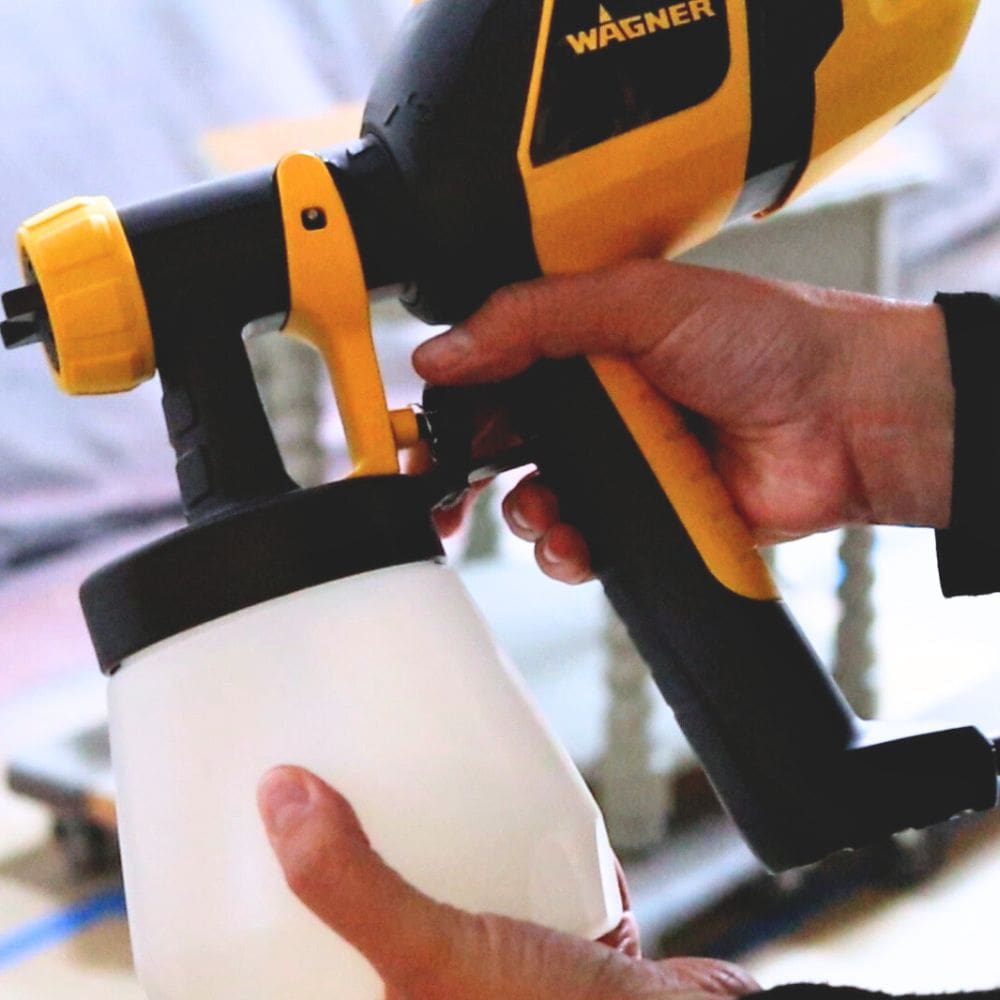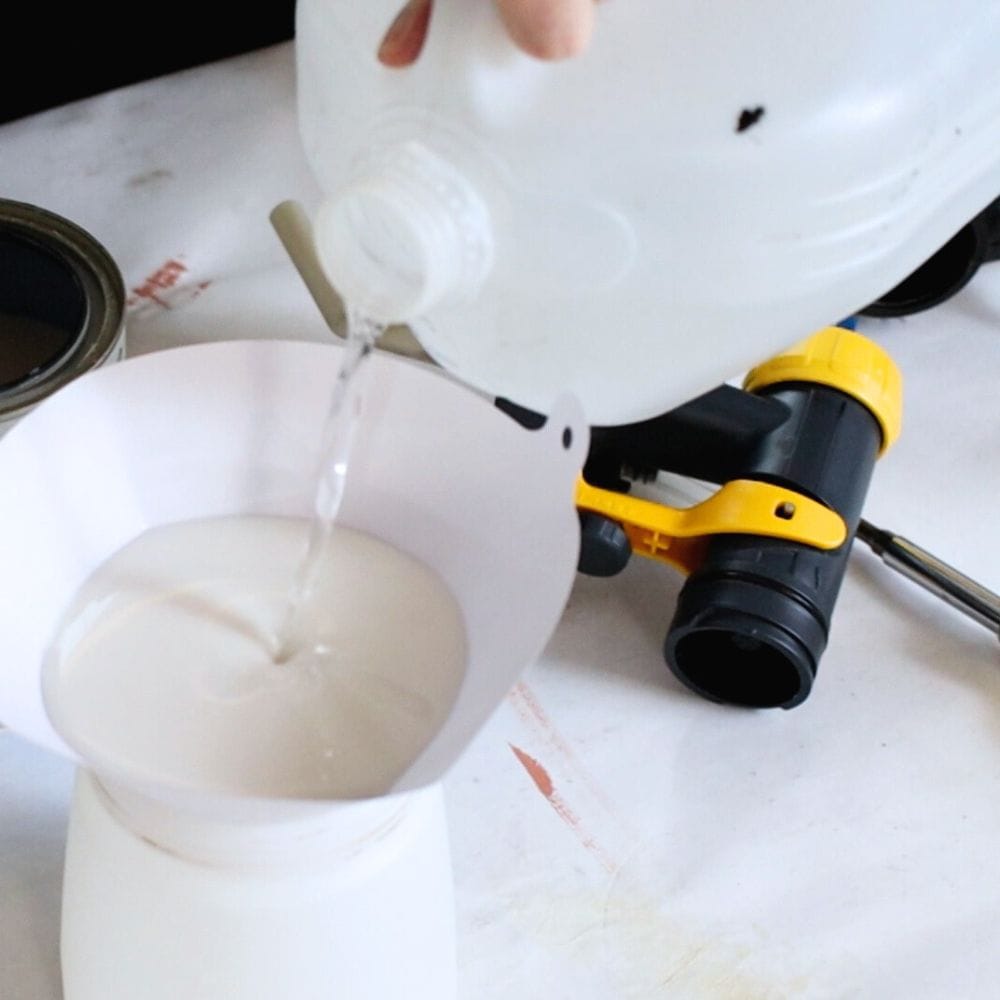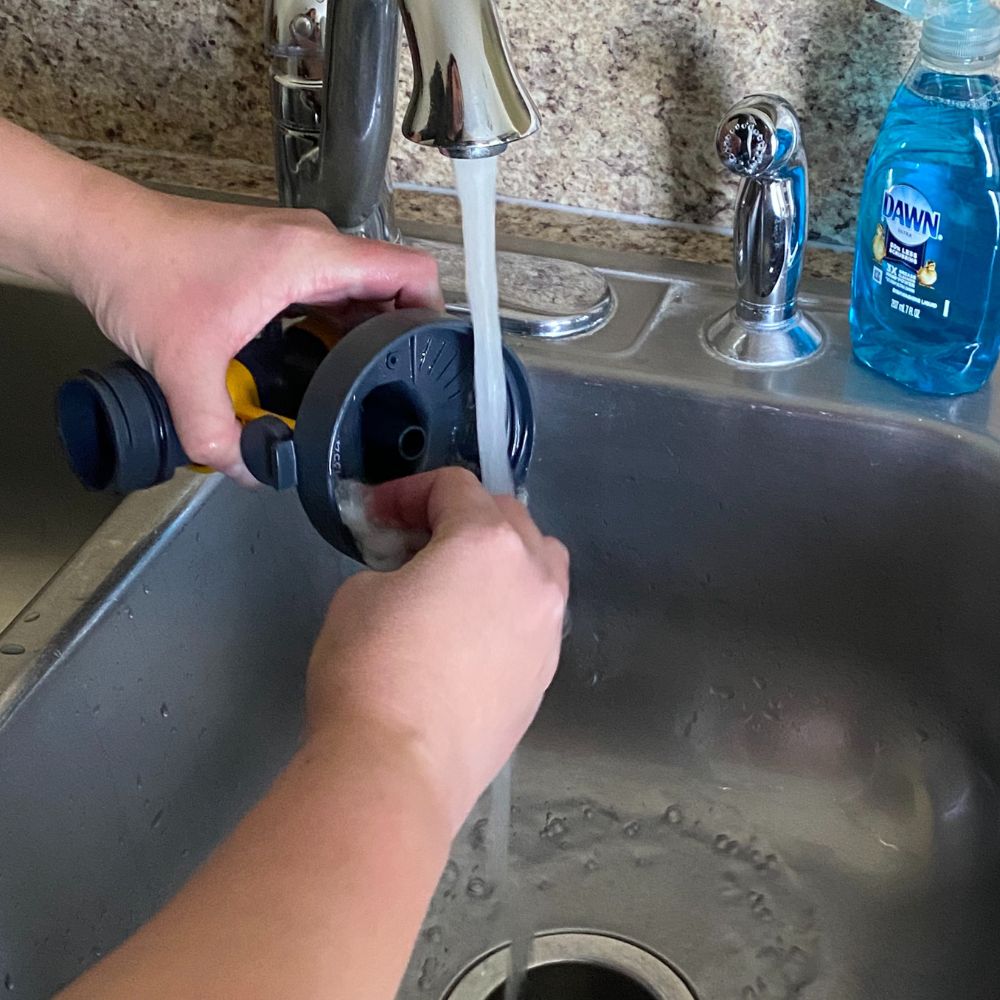Wagner Control Spray 250 Review
Are you tired of spending hours painting furniture with a brush or roller? Using a paint sprayer on furniture definitely speeds up the process and gives a professional finish. In this Wagner Control Spray 250 review, we will be discussing the features and benefits of this sprayer, as well as tips for usage and maintenance.
By the end, you’ll have a better understanding of whether this paint sprayer is the right tool for your painting needs. So, let’s dive in and take a closer look at the Wagner Control Spray 250!

As any DIY-er knows, painting can be a time-consuming and messy process. But with the help of a paint sprayer, you can create a flawless finish in less time and with less effort, especially compared to traditional methods like using a brush or roller.
Wagner is a trusted brand in the world of paint sprayers, and Wagner paint sprayers for furniture have been a popular choice among DIYers and pros for their efficiency, versatility, and ease of use.
Now we will be taking a closer look at the Wagner Control Spray 250.
As an Amazon Associate, I earn from qualifying purchases. I also may earn from other qualifying purchases with other companies or get free product to review and use. All opinions are my own.
Wagner Control Spray 250 Specs and Benefits
The Wagner Control Spray 250 is an HVLP sprayer designed for small to medium sized projects, such as painting furniture, trim work, and small fences.
It can effortlessly spray a range of materials like transparent to solid stains, water-based lacquers, and paints (thinning may be needed).
The sprayer also comes with a handy material flow adjustment feature, so you can customize the output according to your project’s needs. This sprayer offers three spray patterns – horizontal, vertical, and round – so you can choose the one that fits the shape of your piece.

It’s way better than using a brush or roller because you can get your painting done 3 times faster and get a smooth, consistent finish with no brush marks. It can also easily stain an 8′ x 10′ area in less than 2 minutes! That’s a huge time saver.
The Wagner Control Spray 250 is lightweight and compact, making it easy to handle and reducing fatigue during long painting sessions. Plus, the motor detaches from the container and sprayer tip so cleaning up after use is a breeze.
However, please note that thick materials will not spray well from this sprayer. Paint has to be thinned out quite a bit to work with this sprayer.
If you want to spray thick paints, a better paint sprayer is the Wagner FLEXiO 595 paint sprayer (also known as the Wagner 3500 sprayer). Read more about our Wagner FLEXiO 3500 paint sprayer review to see if it’s a better fit for you.
Pros
- Lightweight and compact
- Easy to handle and use for extended periods of time
- Detachable motor for easy cleaning
- Three spray patterns for versatile use
- Material flow adjustment for customized output
Cons
- Not suitable for thick paints without thinning
- May require frequent refilling for larger projects
Tips for Using Wagner Control Spray 250
While the Wagner Control Spray 250 is pretty straightforward to use, there are a few tips that can help you get optimal results.
First, it’s important to test the sprayer with water before using it with paint. This way, you can get a hang of how it works, get a feel for the sprayer’s output, and make sure everything is in proper working order.
If using paint, it’s recommended to filter it before pouring into the sprayer to prevent clogs. And when working with thicker materials like chalk paint or acrylic paint, be sure to thin them out enough for smooth spraying.

Here’s how to thin paint for a Wagner sprayer if you need some guidance on the process.
Also, keep in mind that not all types of paint for furniture are a good fit for the Wagner Control Spray 250. Avoid enamel paints or alkyd paints since they need a lot of thinning and might not work as expected.
Instead, go for options like chalk paint, acrylic paint, or mineral paint that can be easily thinned out for spraying. Here’s our best paint for spraying furniture to know which one is best for your project.
Overspray is always a concern when using a paint sprayer, so cover any surfaces or objects nearby that you don’t want painted. We have this guide on how to prevent overspray when painting furniture so you can protect your workspace.
Maintenance and Care for Wagner Control Spray 250
The Wagner Control Spray 250 is relatively low maintenance, but there are a few things you gotta do to make it last. After each use, make sure to clean the sprayer really well. This will prevent any paint from drying up and clogging the sprayer’s parts.

You can check out our guide on how to clean a Wagner paint sprayer to know exactly what cleaning solution to use and what to do.
You should also regularly inspect the sprayer’s parts and replace any damaged or worn out components. This will keep the sprayer working smoothly and prevent any potential problems while using it.
Troubleshooting Wagner Control Spray 250
But as with any tool, issues may arise when using the Wagner Control Spray 250. Clogging is one of the most common problems, and it usually happens when using thicker materials or not thinning the paint enough.
To fix this, simply clean the clogged parts and thin the paint if needed.
Another issue could be paint drips or splatters, which can be caused by incorrect settings or not holding the sprayer at the correct distance from the surface, or spraying too much at once.

To avoid this, practice your technique and adjust your settings while testing on a piece of paper or cardboard until you get it right.
If you encounter any other problems while using the Wagner Control Spray 250, don’t worry! We have our Wagner Paint Sprayer troubleshooting guide that can help you troubleshoot and fix these common issues and more.
And if you need more specific instructions, the user manual is always there to lend a hand.
How do I adjust the spray pattern on the Wagner Control Spray 250?
To switch between horizontal, vertical, and round spray patterns, simply rotate the air cap located on the front of the sprayer. Practice on a piece of cardboard before starting your project to get comfortable with the different patterns.
Can I use the Wagner Control Spray 250 for larger projects?
While it’s possible to use this sprayer for larger projects, it’s more suitable for pieces of furniture. It may not be efficient or practical for extensive painting jobs like walls and large fences because of the size of the container.
Check out our blog post about the DIY Blue China Hutch makeover where we used Wagner Control Spray 250.
As you can see, the Wagner Control Spray 250 is a versatile and efficient tool for all your small to medium painting projects. With its range of spray patterns and adjustable material flow, you can definitely paint in a fraction of the time compared to traditional methods.
We’ve featured this sprayer as one of the best cheap paint sprayers, check out this post to learn more.

Just be sure to follow our tips for using, maintaining, and troubleshooting this Wagner paint sprayer to get the best results.
More Paint Sprayer Reviews
- Wagner Flexio 5000 Paint Sprayer Review
- Best Paint Sprayer for Home Use
- Is A Fuji Q4 Paint Sprayer Worth It?
- Honest Wagner Double Duty Paint Sprayer Review
- Best Paint Sprayer for Walls
Follow us on YouTube to get more tips for painting furniture.
Or share your project with us on our Facebook Group and be part of our community. See you there!
